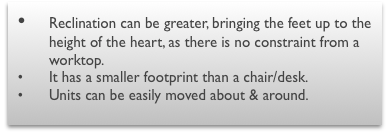Chair remediation. An OVERVIEW
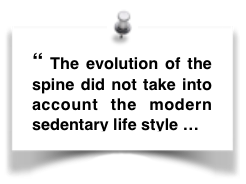 Having identified the main adverse effects on the spine of upright sitting, it becomes possible to consider the options available for chair remediation. This depends on whether the design is for an upright chair, which is inevitably partial, or a full optimisation which is a ‘paradigm shift’ (The 2T).
Having identified the main adverse effects on the spine of upright sitting, it becomes possible to consider the options available for chair remediation. This depends on whether the design is for an upright chair, which is inevitably partial, or a full optimisation which is a ‘paradigm shift’ (The 2T).
The adverse effects of upright sitting.
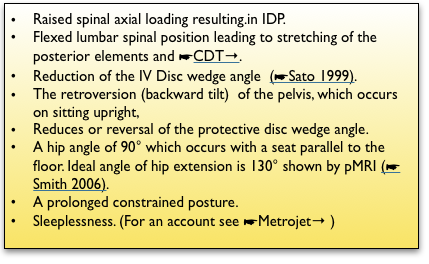
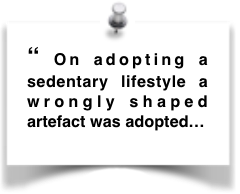 This has already been covered in Biomechanics but is recapitulated :-
This has already been covered in Biomechanics but is recapitulated :-
- The intradiscal pressure (IDP) from spinal axial loading in the upright state. The conventional upright sitting posture increases disc compression.
- Retroversion (backward tilt or to an an anatomist a ‘forward tilt’) of the pelvis results in lumbar spinal flexion which reduces or reverses the protective disc wedge angle.
- Stretching of the posterior elements (ligaments joint capsules) allowing instability of the motion segment and can lead to CTD.
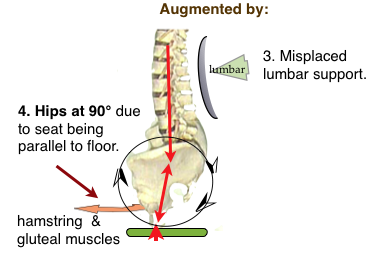 A reduced hip angle. With a seat parallel to the floor the hip angle at only 90° the hip extensor muscles (hamstrings & glutei) also rotate the pelvis so as to flatten the lumbar lordosis.
A reduced hip angle. With a seat parallel to the floor the hip angle at only 90° the hip extensor muscles (hamstrings & glutei) also rotate the pelvis so as to flatten the lumbar lordosis.- The lower lumbar intervertebral joints (L5/S1, L4/5 & less, L3/4), on the mobile side of the lumbo-sacral junction, being the most at risk
- Localised pressure in the area of the ischial tuberosities (IT)
- Immobility.
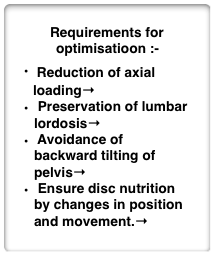 Chair remediation. Requirements for any chair design or a full optimisation.
Chair remediation. Requirements for any chair design or a full optimisation.
- ☛ Reduction of axial loading
- ☛ Maintain lordosis at the lumbo-sacral junction→
- ☛ Avoid backward tilting of the pelvis→
- ☛ Ensure disc nutrition by pressure changes with movement→
Derived from these findings are the ergonomic requirements to help chair remediation of the adverse effect of the Upright seated mode. Essentially these are two.
Solutions:-
1. Partial solutions
Partial solutions are for mid-upright sitting in chairs that have been well designed and engineered.
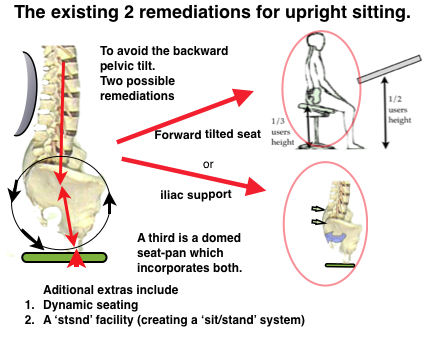
Derived from these findings are the ergonomic requirements to help remediate the adverse effect of the Upright seated mode. Essentially these are two.
Upright chair remediation.
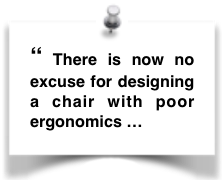 ☛forward tilted seat→,
☛forward tilted seat→,- ☛Pelvic support→,
- The Ischial off-load system. A third, now often used for Upright seated mode remediation in a number of chairs is derived from a combination of the 2 above. The seat-pan is convex so that the front half acts as a forward tilted seat and the back half allows the user to sink back into the back support. Hopefully this is correct iliac support.
It must be emphasised that these are commonly misapplied due to failure to understand the underlying scientific basis. Some insight can be gleaned from ☛Various chairs. How do they measure up? At best they are not a solution to fully reduce the incidence of backache (LBP).
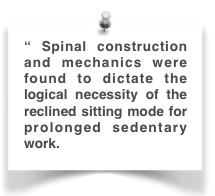 A supine reclined work chair is no longer unknown (Okamura, Altwork) and remediates all the adverse effects of the upright sitting mode. The poor uptake of reclined models seem due to failusre to appreciate the essential requirements for this mode to become fully functional. This must include the full chair remediation incorporated in the 2T (3M, 4M) concept.
A supine reclined work chair is no longer unknown (Okamura, Altwork) and remediates all the adverse effects of the upright sitting mode. The poor uptake of reclined models seem due to failusre to appreciate the essential requirements for this mode to become fully functional. This must include the full chair remediation incorporated in the 2T (3M, 4M) concept.
The FULL solution …
- The 2TILT (2T, 3M) CONCEPT.
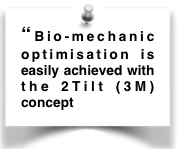 An optimal system that effectively fully remediates all the adverse effects that have been enumerated. Any chair can be compared to it for establishing it’s ergonomic efficiency. An essential tool for chair design. See ☛ 2T CONCEPT a full solution→ For the 2T full remediation further requirements are necessary.
An optimal system that effectively fully remediates all the adverse effects that have been enumerated. Any chair can be compared to it for establishing it’s ergonomic efficiency. An essential tool for chair design. See ☛ 2T CONCEPT a full solution→ For the 2T full remediation further requirements are necessary.
 This involves
This involves
ALTERNATIVE SYSTEMS
- Sit/Stand. The importance of keeping staff exercised is increasingly recognised. For more detail See ☛Sit/Stand→ The negative consequences of constrained sitting has been described by a number of authorities (Adams and Hutton, 1983; Duncan and Ferguson, 1974; Edlund, There are advantages in keeping staff moving around and inter-reacting in certain types of office.
Note that a sit/stand system can always incorporated into a 3M work chair station→ - Office in a pool. Hardly suitable for the UK!
- Relevant to any form of remediation, see
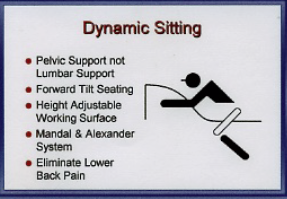 ☛RSI (WRULD)→
☛RSI (WRULD)→- ☛ADJUSTMENTS?→
- ☛COMFORT→
3M OFFICE WORK-STATION
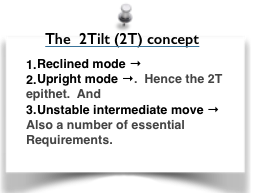 An office work-station is easily derived from the 2Tilt chair concept and now renamed the ‘TriModal’ (3M) concept.
An office work-station is easily derived from the 2Tilt chair concept and now renamed the ‘TriModal’ (3M) concept.
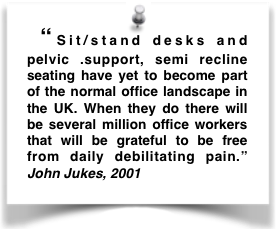 When a sit/stand component is incorporated it becomes a 4M concept. See☛workstations→
When a sit/stand component is incorporated it becomes a 4M concept. See☛workstations→

